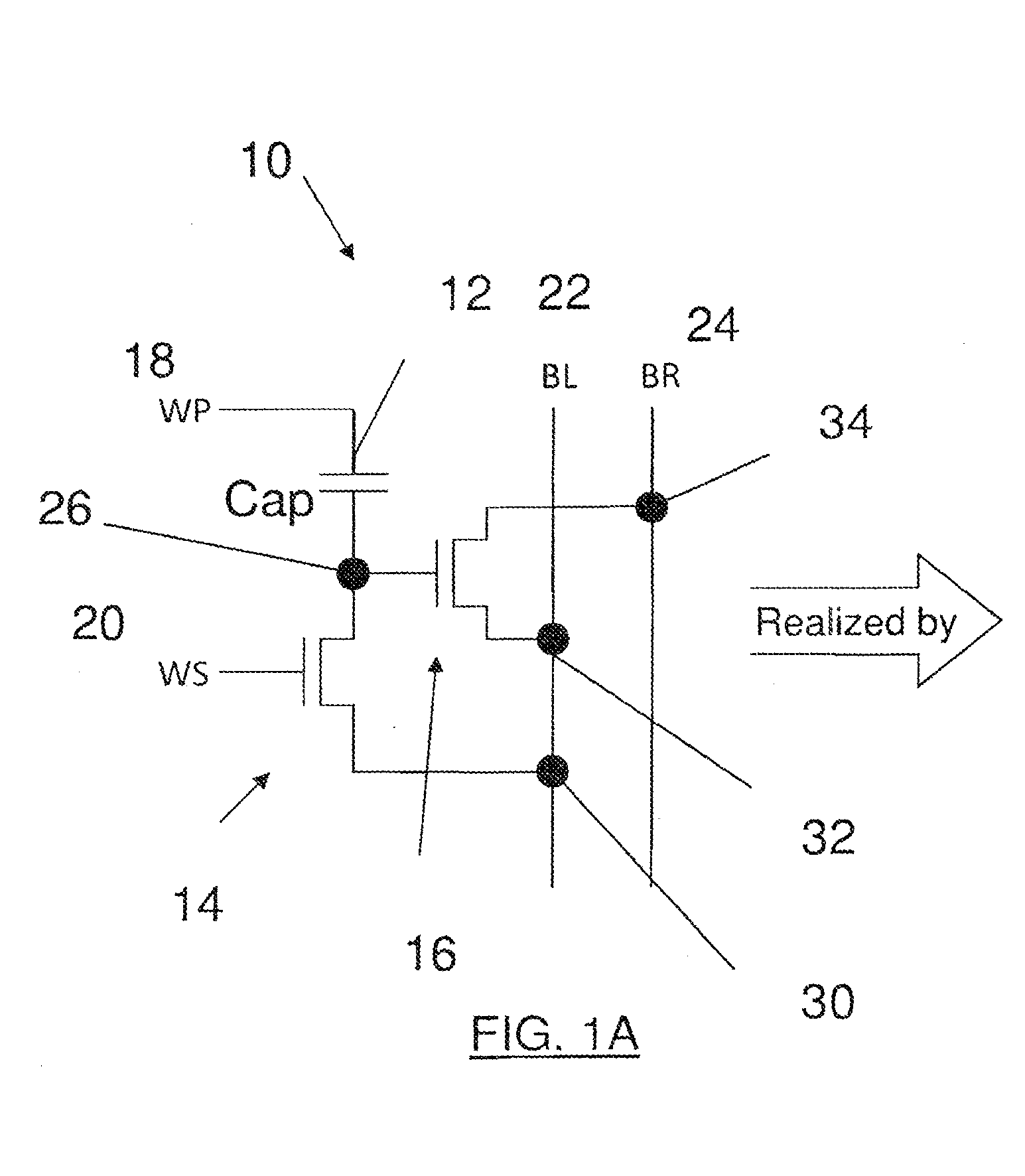Soft breakdown mode, low voltage, low power antifuse-based non-volatile memory cell
a non-volatile memory cell, low voltage technology, applied in the field of non-volatile memory, can solve the problem that high resistance cells cannot be read out with high signal levels
- Summary
- Abstract
- Description
- Claims
- Application Information
AI Technical Summary
Benefits of technology
Problems solved by technology
Method used
Image
Examples
Embodiment Construction
[0019]The embodiments comprise one-time programmable (OTP) nonvolatile memory cells. The memory cells occupy small areas and are optimized for low bit count applications. Such memory cells can be used for code storage memories, serial configuration memories, and as individual fuse bits for identification (ID), trimming, and other post-fabrication system-on-chip (SoC) customization.
[0020]In general, programming this type of memory cell involves steering a high voltage pulse to a special fuse transistor in a particular memory cell or core. The current in the pulse is used to push the special fuse transistor into permanent breakdown, e.g., blowing like fuse. Reading back the programming involves passing a current through the fuse memory cell, and sensing the current level. The current that passes through the fuse is an indication of the cell's data content, a “1” or a “0,” depending on the agreed convention.
[0021]An XPM memory cell, like that marketed by Kilopass Technologies, Inc. (Sa...
PUM
 Login to View More
Login to View More Abstract
Description
Claims
Application Information
 Login to View More
Login to View More - R&D
- Intellectual Property
- Life Sciences
- Materials
- Tech Scout
- Unparalleled Data Quality
- Higher Quality Content
- 60% Fewer Hallucinations
Browse by: Latest US Patents, China's latest patents, Technical Efficacy Thesaurus, Application Domain, Technology Topic, Popular Technical Reports.
© 2025 PatSnap. All rights reserved.Legal|Privacy policy|Modern Slavery Act Transparency Statement|Sitemap|About US| Contact US: help@patsnap.com



